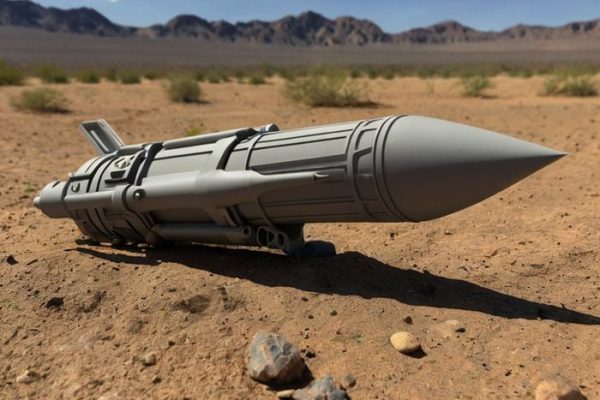
Charles R. Goulding and Preeti Sulibhavi reflect on some noteworthy 3D printing developments that were covered in 2023.
The year 2023 did not hold back on featuring some major 3D printing developments. Here are a few that we would like to highlight.
Israel-Hamas War
The terrorist attack initiated by Hamas on October 7, 2023, triggered the Israel-Hamas War. The deployment of military weapons, tanks, and Israeli Army Reservists was substantial. We covered how the Israeli Defense Force has called around 360,000 reservists into active duty and how that affected major companies in Israel, including Stratasys.
Conclusion of the Prolonged Four-Company 3D Printing Merger Saga
The 3D printing merger saga between Stratasys, Desktop Metal, Nano Dimension and 3D Systems has been covered extensively on Fabbaloo. Although the unfolding soap opera made headlines in 2023 with many anticipating Desktop Metal to be the clear frontrunner, the conclusion was quite anti-climactic with none of the three rivals successfully acquiring Stratasys (despite all of the drama).
Ukraine/NATO
There were several international developments spurred by the War in Ukraine, one of them being the admittance of Sweden into NATO. We have also explored Danish 3D printing innovations aimed at restoring Ukraine’s infrastructure, along with the ways in which 3D printing can contribute to the improvement of Ukraine’s railways. Ukraine will still very much be on our radar in 2024.
Concrete Homes
The year 2023 brought with it major innovations in concrete 3D printing, mostly for the construction of homes and other buildings. Cemex Ventures has made made significant progress in material optimization, waste management and addressing carbon emissions for a more sustainable construction industry and just this past year, BIG and ICON teamed up and set out to make a 3D printed neighborhood in Austin, Texas.
Drone Technology
From Ukraine’s unconventional 3D printing pivot in drone technology to the rise of drones in Africa, we have extensively covered the use of 3D printing in developing drone technologies.
We have also highlighted the drone company, Swoop Aero. They aim to provide integrated logistics services to 100 million people by the end of 2025, expanding to 1 billion people by 2030, with a mission to offer the world’s leading technology platform for sustainable and scalable drone logistics. Swoop’s achievements led to a US$1.5 million funding award from USAID to fuel the company’s expansion.
Bioprinting
Whether it was Rice’s innovative approach to bioprinting or our conversation with Bruna Alice Gomes de Melo, bioprinting was huge in 2023. The technology has even helped people handle personal tragedies, like Martine Rothblatt, United’s CEO.
The viability of lab-grown organs is increasing, as researchers improve techniques that will allow for the printing of cells with embedded blood vessel networks. Maryland-based biotech United Therapeutics stands out in the quest to solve the organ supply crisis, particularly the 3D printing of organ scaffolds that could potentially be filled with a patient’s own stem cells and transplanted into their body.
Electronics
We specifically covered how Nano Dimension was entering into additive manufacturing electronics. We also highlighted the rise of chiplets in the tech industry.
Then there was the electrochemical additive manufacturing breakthrough by Fabric8Labs, which we covered back in April. The company is primarily involved in metal 3D printing, without using powders. Fabric8Labs’ proprietary Electrochemical Additive Manufacturing technology enables the company to economically 3D print highly complex components for its top target markets including semiconductor heat sinks and radio frequency antenna parts.
Post-Covid Surgery and Dental Procedures
Whether it was taking advantage of 3D printing for enhanced elective surgeries during the pandemic, or LimaCorporate and Siemens developing cementless 3D printed knee implants, we have been reporting on the rise in demand for elective surgeries post-Covid throughout the year.
The Research & Development Tax Credit
The now permanent Research and Development (R&D) Tax Credit is available for companies developing new or improved products, processes and/or software.
3D printing can help boost a company’s R&D Tax Credits. Wages for technical employees creating, testing and revising 3D printed prototypes can be included as a percentage of eligible time spent for the R&D Tax Credit. Similarly, when used as a method of improving a process, time spent integrating 3D printing hardware and software counts as an eligible activity. Lastly, when used for modeling and preproduction, the costs of filaments consumed during the development process may also be recovered.
Whether it is used for creating and testing prototypes or for final production, 3D printing is a great indicator that R&D Credit eligible activities are taking place. Companies implementing this technology at any point should consider taking advantage of R&D Tax Credits.
Conclusion
Should auld acquaintance be forgot and never brought to mind? Of course not. The past year was one for the record books. We hope you enjoyed this journey throughout the past year and how the 3D printing industry has impacted various markets in 2023.
منبع: https://www.fabbaloo.com/news/top-3d-printing-developments-of-2023

